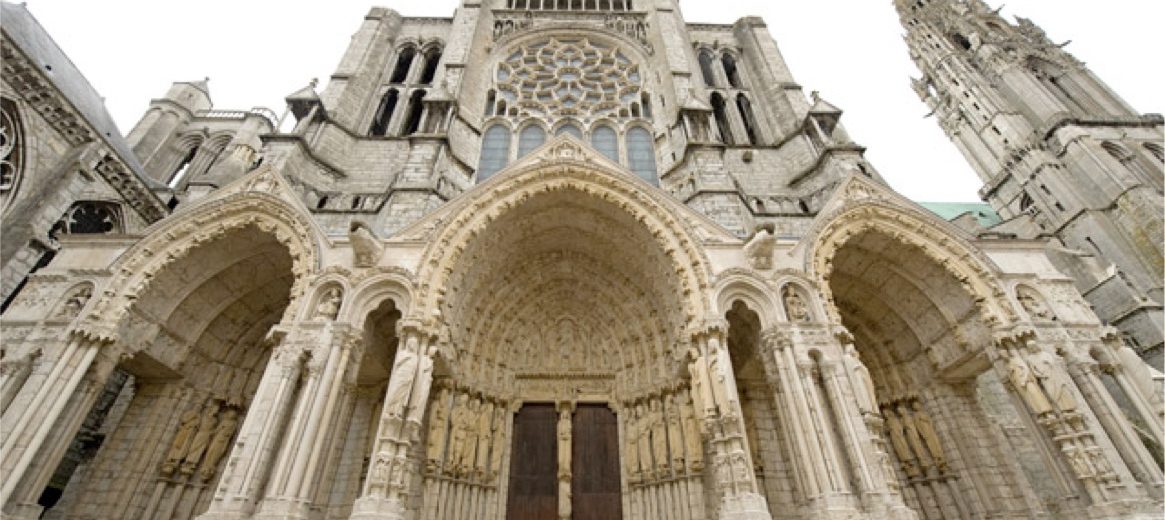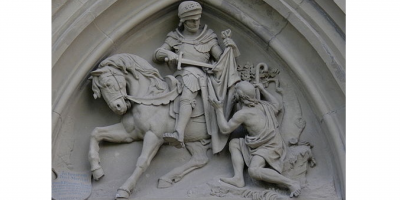Cathedrals, for centuries soaring above many city horizons, remain powerful statements of transcendent reality in a continent too often written off as post-Christian.
Many of us with Protestant-evangelical-pentecostal backgrounds don’t quite know how to relate to these proud symbols of a much-abused, largely by-gone marriage of church and state, the era of a Christendom few would want to see revived. For a fifth-generation non-conformist such as myself, they represented a betrayal of the simplicity and humility of the gospel.
And yet, especially in recent years as my wife and I have led many Heritage Tours throughout the continent and the British Isles, I have developed a deep awe and wonder of these magnificent creations with their faithful and durable witness to many Biblical truths.
Paradoxically, in our very secularised part of the world, cathedrals continue to be among the most visited tourist sites in Europe. Notre Dame Cathedral in the heart of Paris rivals Disneyland on the outskirts of the French capital, both with around 14 million visitors annually, as Europe’s top tourist venue. That’s over 38,000 daily!
Cologne Cathedral is Germany’s most visited attraction with six million visitors each year, about the same as Milan’s famous cathedral. The cathedral in Strasbourg attracts four million, while Gaudi’s still unfinished La Sagrada Familia in Barcelona draws three million visitors per annum.
Those five cathedrals alone account for 33 million visitors annually between them. And all those visitors are exposed to testaments in stone and glass about God, Jesus and salvation.
Treasurehouses
Earlier this summer, I visited cathedrals in Ireland, Scotland and England, including St Patrick’s in Dublin, Yorkminster, Durham, Lincoln, Coventry and Canterbury Cathedrals. Each has its own story and historical connections to its city and nation, making them priceless treasurehouses of national heritage. They remind us of how interwoven the Christian story is with Europe’s past. Each also testifies to elements of the biblical story, often with graphic portrayals of the stark realities of the Last Judgement over the portal.
A few days ago, I became one of the two million who will visit Chartres Cathedral this year (see photo), famous for its labyrinth-design on the floor of the nave. At the entrance, a welcome notice invites visitors to join a journey of spiritual discovery, as they respectfully walk through the building, starting at the western entrance and moving towards the light of the eastern end where the sun rises, via the altar at the heart of the cross-shaped edifice. The labyrinth, fully exposed only on Fridays when the chairs of the nave are removed, also represents the journey from earth to heaven, towards the Creator through salvation in Christ.
Chartres, its present form built at the high point of Gothic architecture in the 13th century, is typical of the tall, light and airy structures emphasising the large and intensely-colourful stained-glass windows, and that superseded the earlier Romanesque (or in England, Norman) darker and heavier interiors with their small windows and wall frescoes. (The description of ‘Gothic’ only came into use during the Enlightment as a term of disparagement, meaning ‘barbarian’ and uncouth. Enlightenment thinkers wanted to return to the ‘pure’ classical forms of Greece and Rome. Originally Gothic architecture was referred to as the French style.)
Symbolism
In medieval society, the cathedral reflected the greater reality of the unseen world, the infinite, the timeless. It embodied the view that Christ was ‘all in all’, the integration of society around Christ, held together by the cosmic Christ, the cornerstone of reality. The cathedral’s crossform–with the transept providing the horizontal of the cross, intersecting at the altar and separating the nave from the choir and sanctuary–not only reflected Christology but anthropology. The cathedral layout mirrored the human head, arms, torso, legs. Man was a microcosm of the macrocosmos. Man was the temple of God: the altar was the heart.
The cathedral integrated all the art forms, including architecture, sculpture, painting, stained glass, weaving, music and the liturgical choreography, with its rituals and processions. It became an unparalleled and overwhelming example of the social function of Christian art: all the arts served the universal christocentric symbolism.
The building of the cathedral engaged virtually everyone in the city, directly or indirectly. It was a common project, not elitist. It created jobs for many. It was the common focal point for the region. Often elements from old nature religions and paganism were retained and ‘baptised’ with Christian meaning and symbolism.
Long after many of our modern church buildings have been demolished and replaced, I suspect Europe’s cathedrals will continue to witness to the One who died on the cross to reconcile mankind to the Creator. They will continue to provoke curiosity in future generations and hopefully to rediscover those timeless truths which gave Europe her soul, her values, her lifesource.
Till next week,




Sue and I had the privilege of visiting the Cathedral at Chartres in June this year. It was a wonderful experience. But it emphasized to us the huge differences of spiritual climate between Cathedrals, which is down to the spiritual vision of their past and present stewards. A challenge, I think, for some contemporary disciples to get involved on the ground.
“I think it is correct to argue that the social preservation of religion as a major institution within secular societies has been in part won through the successful creation, protection and nurturing of symbolic places.” David Harvey